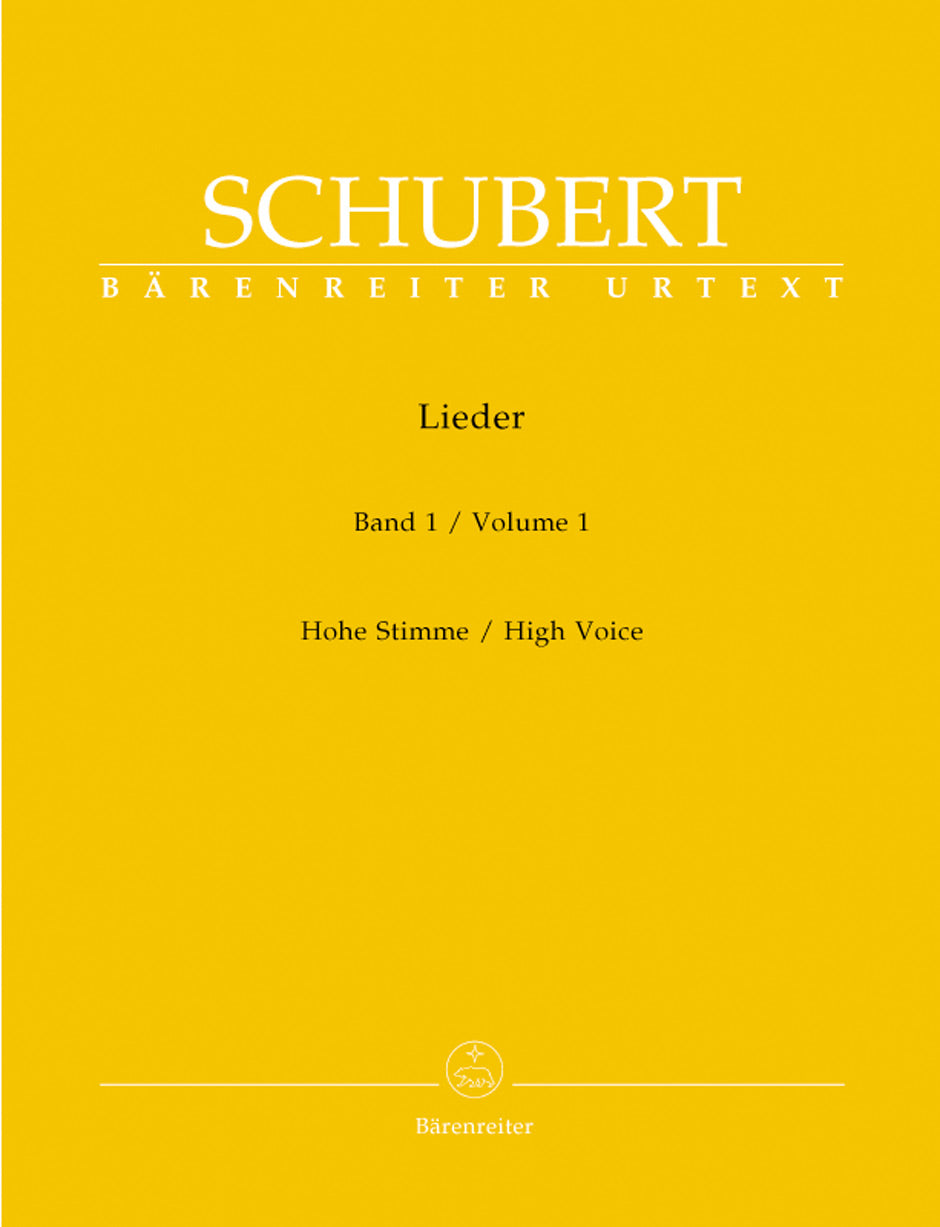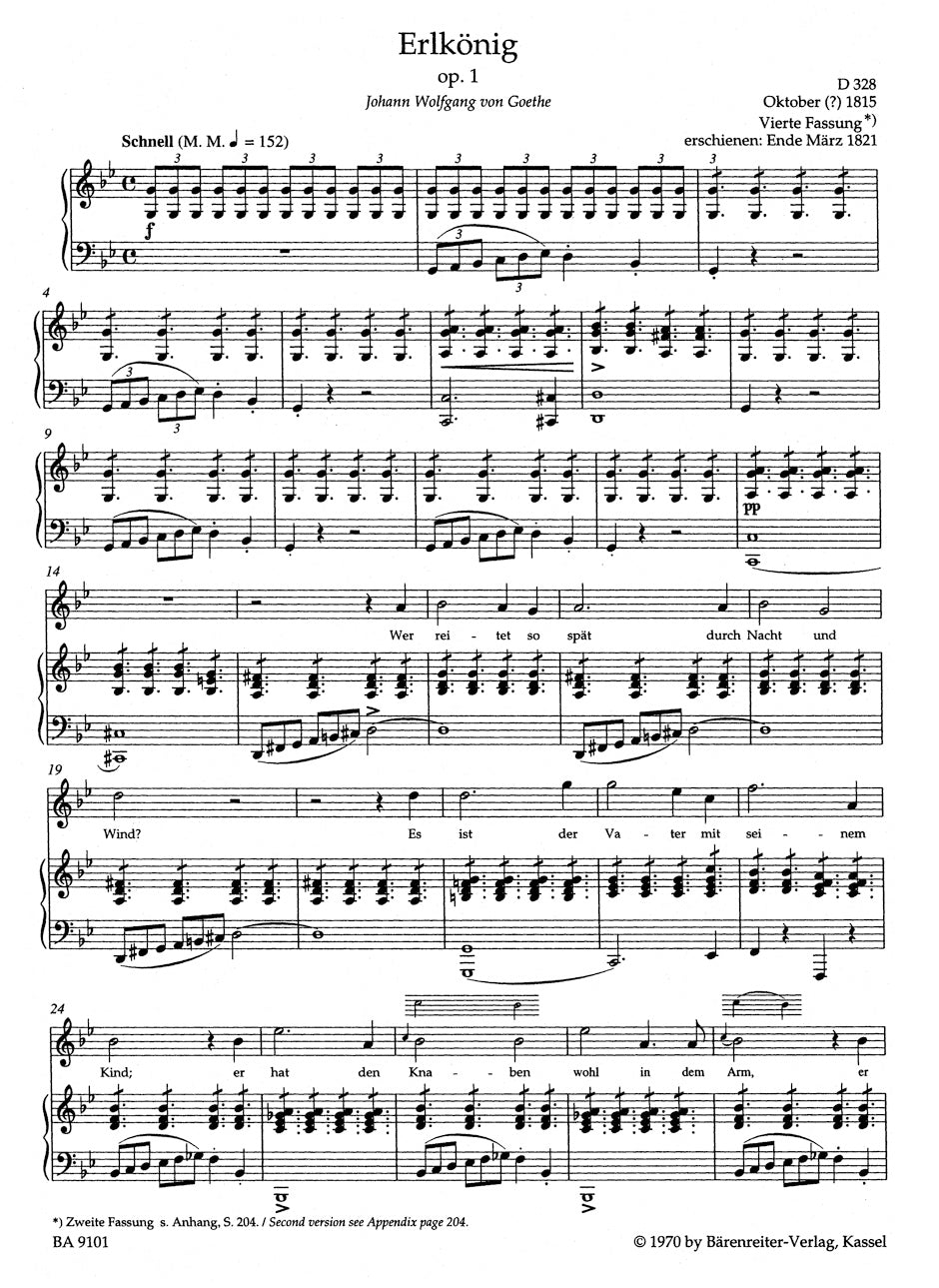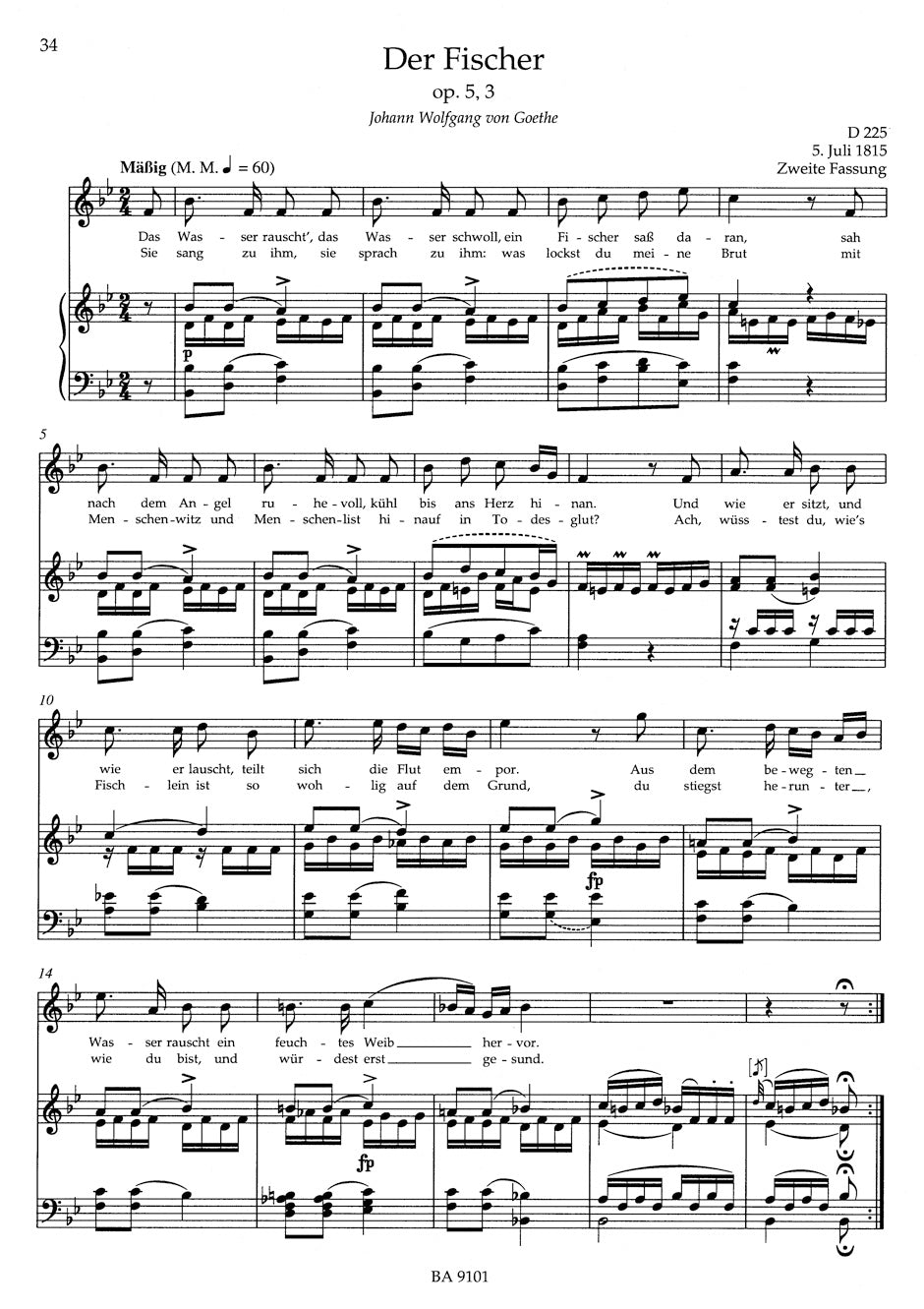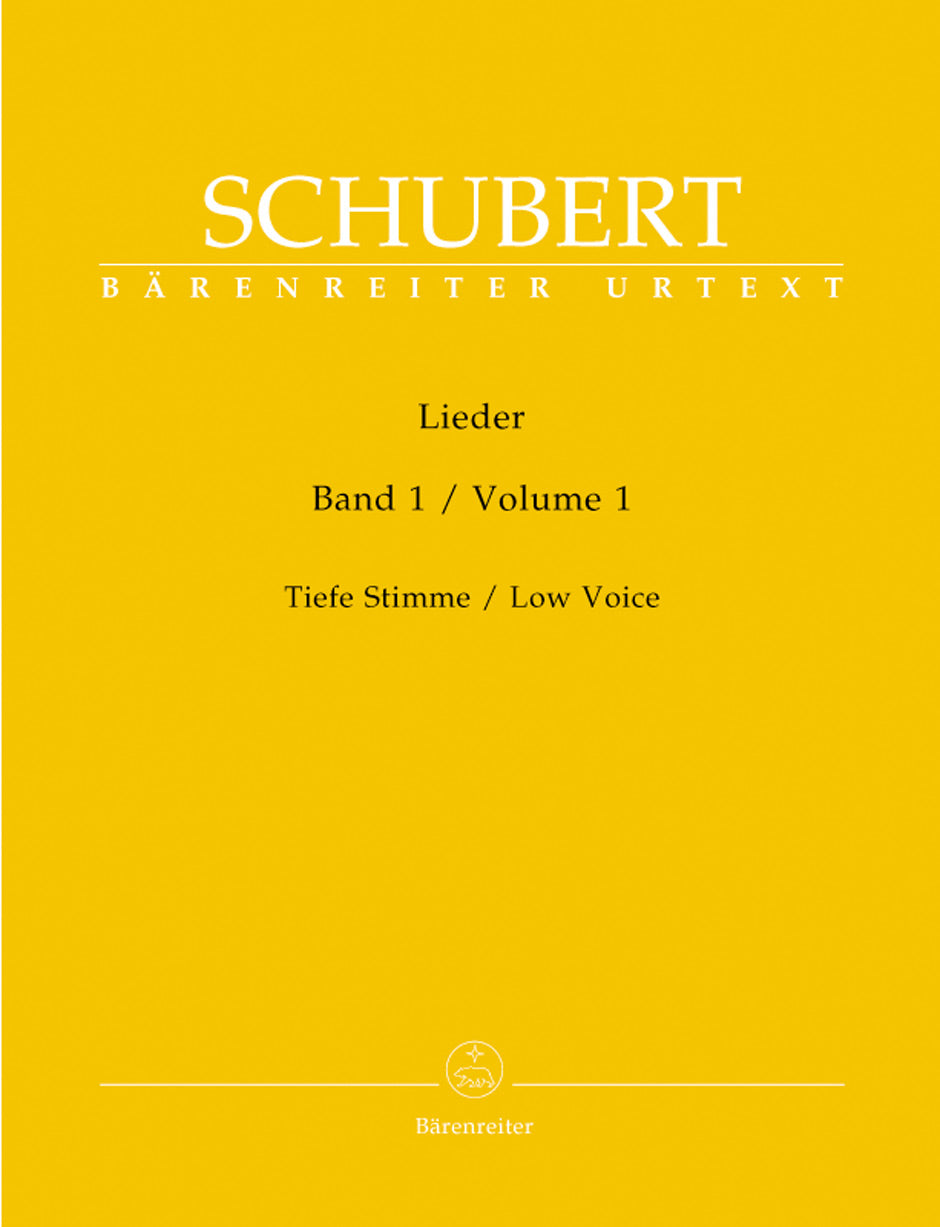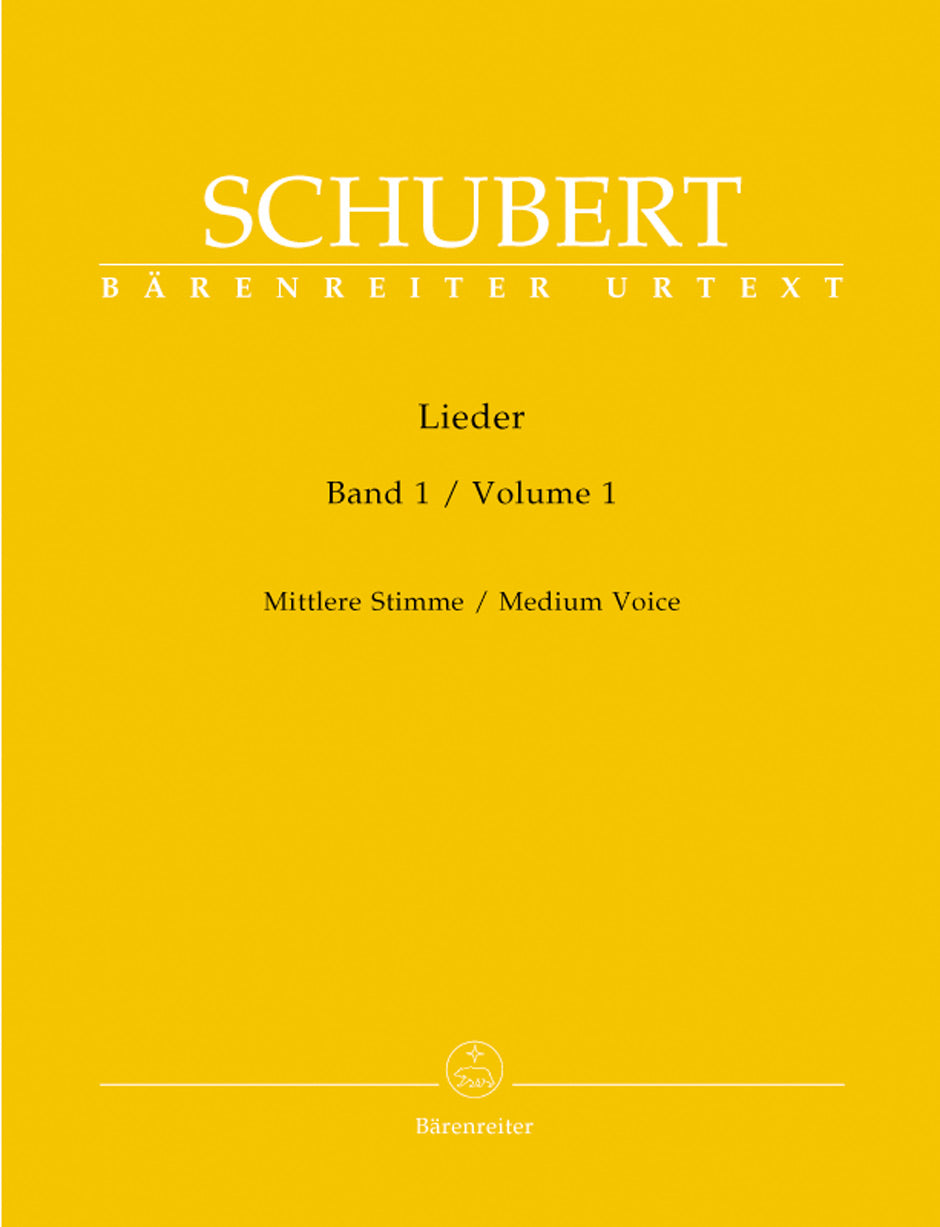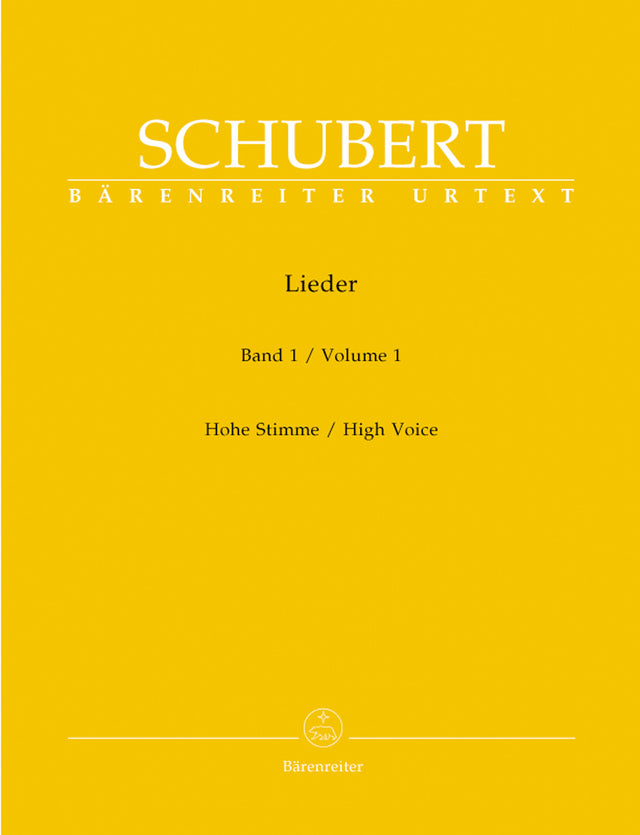Schubert: Lieder - Volume 1 (Op. 1-25)
In stock and typically ships within 1 business day.
- Composer: Franz Schubert (1797-1828)
- Editor: Walther Dürr (1932-2018)
- Instrumentation: Piano, Voice
- Work Language: German
- ISMN:
- Size: 9.1 x 11.8 inches
- Pages: 215
- Urtext / Critical Edition
Description
The New Schubert Edition is the only scholarly-critical edition that will, once completed, include Franz Schubert's lieder in their entirety. in response to the rising expectations of performers and listeners alike, all the lieder will be published over the next few years in performing editions containing the text of Walther Dürr , the eminent Schubert scholar and former Managing Editor of the New Schubert Edition. The new series will substitute the edition jointly published by Bärenreiter and G. Henle since 1977.
- Introduction by Walther Dürr focuses on peculiarities in the genesis and performance history of each lied and provides solid information on performance practice
- Adopts straightforward ordering principle from the New Schubert Edition: first by opus number, then in chronological order
- Complete transposition into three vocal registers finally allows every singer to work with the latest findings of Schubert scholarship
The edition is scheduled to include eleven volumes. Each volume will appear in three editions; one for high voice, one for middle voice and one for low voice.
Works:
- Erlkönig, D 328, Op. 1
- Gretchen am Spinnrad, D 118, Op. 2
- Schäfers Klagelied, D 121, Op. 3, No. 1
- Meeres Stille, D 216, Op. 3, No. 2
- Heideröslein, D 257, Op. 3, No. 3
- Jägers Abendlied, D 368, Op. 3, No. 4
- Der Wanderer, D 489, Op. 4, No. 1
- Morgenlied, D 685, Op. 4, No. 2
- Wanderers Nachtlied, D 224, Op. 4, No. 3
- Rastlose Liebe, D 138, Op. 5, No. 1
- Nähe des Geliebten, D 162, Op. 5, No. 2
- Der Fischer, D 225, Op. 5, No. 3
- Erster Verlust, D 226, Op. 5, No. 4
- Der König in Thule, D 367, Op. 5, No. 5
- Memnon, D 541, Op. 6, No. 1
- Antigone und Oedip, D 542, Op. 6, No. 2
- Am Grabe Anselmos, D 504, Op. 6, No. 3
- Die abgeblühte Linde, D 514, Op. 7, No. 1
- Der Flug der Zeit, D 515, Op. 7, No. 2
- Der Tod und das Mädchen, D 531, Op. 7, No. 3
- Der Jüngling auf dem Hügel, D 702, Op. 8, No. 1
- Sehnsucht, D 516, Op. 8, No. 2
- Erlafsee, D 586, Op. 8, No. 3
- Am Strome, D 539, Op. 8, No. 4
- Gesänge des Harfners aus "Wilhelm Meister", D 478, Op. 12
- Der Schäfer und der Reiter, D 517, Op. 13, No. 1
- Lob der Tränen, D 711, Op. 13, No. 2
- Der Alpenjäger, D 524, Op. 13, No. 3
- Suleika I, D 720, Op. 14, No. 1
- Geheimes, D 719, Op. 14, No. 2
- An Schwager Kronos, D 369, Op. 19, No. 1
- An Mignon, D 161, Op. 19, No. 2
- Ganymed, D 544, Op. 19, No. 3
- Sei mir gegrüßt, D 741, Op. 20, No. 1
- Frühlingsglaube, D 686, Op. 20, No. 2
- Hänflings Liebeswerbung, D 552, Op. 20, No. 3
- Auf der Donau, D 553, Op. 21, No. 1
- Der Schiffer, D 536, Op. 21, No. 2
- Wie Ulfru fischt, D 525, Op. 21, No. 3
- Der Zwerg, D 771, Op. 22, No. 1
- Wehmut, D 772, Op. 22, No. 2
- Die Liebe hat gelogen, D 751, Op. 23, No. 1
- Selige Welt, D 743, Op. 23, No. 2
- Schwanengesang, D 744, Op. 23, No. 3
- Schatzgräbers Begehr, D 761, Op. 23, No. 4
- Gruppe aus dem Tartarus, D 583, Op. 24, No. 1
- Schlaflied, D 527, Op. 24, No. 2
- Die schöne Müllerin, D 795, Op. 25
Publishers use a lot of words to describe what they sell, and we know it can be confusing. We've tried to be as clear as possible to make sure you get exactly what you are looking for. Below are descriptions of the terms that we use to describe the various formats that music often comes in.
Choral Score
A score for vocalists that only contains the vocal lines. The instrumental parts are not there for reference. Generally, cheaper than a vocal score and requires multiple copies for purchase.
Facsimile
Reproductions of the original hand-written scores from the composer.
Full Score
For ensemble music, this indicates that the edition contains all parts on a single system (there are not separate parts for each player). In larger ensembles, this is for the conductor.
Hardcover
Hardbound. Generally either linen-covered or half-leather.
Orchestral Parts
Similar to a wind set, this is a collection of parts. In the case of strings, the numbers listed are the number of copies included, though generally these are available individually (often with minimum quantities required).
Paperback
When publishers offer multiple bindings (e.g. hardcover) or study scores, this is the "standard" version. If you're planning to play the music, this is probably what you want.
Performance / Playing Score
A score of the music containing all parts on one system, intended for players to share. There are not separate parts for each player.
Set of Parts
For ensemble music, this indicates that there are separate individual parts for each player.
Solo Part with Piano Reduction
For solo pieces with orchestra, this is a version that contains a piano reduction of the orchestra parts. For piano pieces, two copies are typically needed for performance.
Study Score
A small (think choral size) copy of the complete score meant for studying, and not playing. They make great add-ons when learning concertos and small chamber works.
Vocal Score
A score prepared for vocalists that includes the piano/organ part or a reduction of the instrumental parts.
Wind Set
For orchestral music, this is a collection of wind and percussion parts. The specific quantities of each instrument are notated.
With Audio
In addition to the printed music, the edition contains recordings of the pieces. This may be an included CD, or access to files on the internet.
With / Without Fingering (Markings)
Some publishers prepare two copies - a pure Urtext edition that includes no fingering (or bowing) suggestions and a lightly edited version that includes a minimal number of editorial markings.

